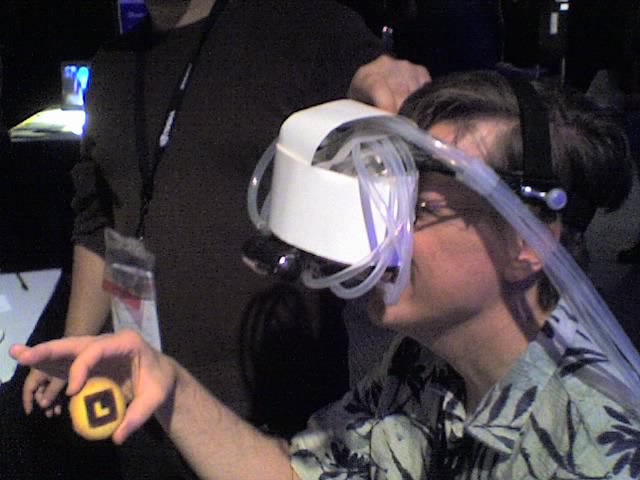Here are a bunch of links to things that are graphical, but definitely not about hard-core interactive rendering. Basically, it’s stuff I found of interest that has a visual and technical component and that I’m compelled by the laws of the internet to pass on. It’s a pile of candy, so I recommend reading just a bit of this post each day. Which of course you won’t do, but at least your teeth won’t rot and you won’t gain 3 pounds.
- An unusual thing at SIGGRAPH 2010 was a talk about visualizing the 6502 processor. It’s got heavyweights such as Greg James (formerly of NVIDIA) working on it. This is a famous chip: Apple II, Atari 2600, Commodore 64, etc. They simulate (not emulate) the chip by creating and manipulating a polygonal model of it. See their website for much more.
- The day has finally arrived: Microsoft Office 2010 requires a GPU supporting DirectX 9.0c, along with 64 MB of GPU memory. I was interested to see such a mainstream application requiring graphics hardware. Admittedly, DirectX 9.0c was released in 2004, but still.
- Polygonal sculpture. Wireframe teapot. Painted people. Cartoon hotel room. Mirror man. Shadow rendering error. See, the world can simulate all sorts of media and artifacts.
- In a similar vein, some lovely images of light that look simulated (link from Vincent Scheib).
- Showing a person’s eyes both open and shut in the same photo is surprising (and not Photoshop). Turns out this effect is due to the rolling shutter used by many cameras. Works for video, too. The first chapter of Andrew Glassner’s Other Notebook talks about simulating this type of shutter and many others (readable on Google Books).
- This was quite clever, a music video that uses Google maps and street view to pull in your childhood neighborhood.
- Some sharp and colorful synthetic holograms of buildings.
- Is there nothing that cannot be a user interface?
- The game “Devil’s Tuning Fork” has a mind-frying rendering style (link from Morgan McGuire).
- Wow, chromakeying truly is omnipresent.
- Animated reverse perspective.
- I have a few RenderMan walking teapots, but never realized there was quite this much interest in them.
- Which reminds me of renderfarms. Marcos Fajardo mentioned in his talk at SIGGRAPH about the Arnold raytracer that interactivity is critical, as CPU time is $0.10 an hour while artists cost $40 an hour. I expect artists actually cost more (insurance, office space, tools, etc.), and it’s interesting to note that the spot instance price for Amazon’s cloud computers is now as low as $0.03, depending.
- This game effect is simply magical (and one day will be as common as, well, 3D graphics).
- There’s a new system for 3D scans of building interiors. I like the concept of grad students carrying packs of lasers – what could possibly go wrong?
- This projection onto a building is just plain brilliant (how can those people just walk by?!). More info here; the clip has better sound but is not continuous.
- A fine illusion, and a similar one with Legos. Another illusion that amazes, though it takes a little effort to understand.
- I mentioned the Meta Cookie project before. I finally got around to downloading my ancient cell phone’s pictures, so here’s proof I survived the process:

Thanks for the interesting set of links! Small correction – the 6502 simulator is by Greg James (formerly of NVIDIA), it’s Greg Humphreys who co-wrote Physically Based Rendering.
D’oh, you’re absolutely right – thanks for the fix, and I’ve corrected the original post.
Pingback: Real-Time Rendering · Really, another Minecraft article?